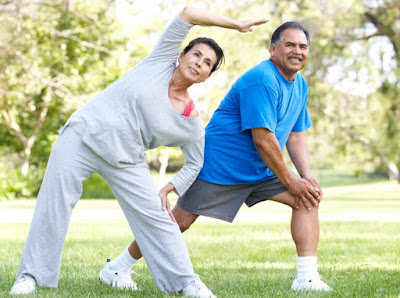
It's not uncommon for people with psoriatic arthritis to develop comorbidities such as cardiovascular disease, diabetes and Crohn's disease. Exercise—anything that gets your heart pumping and your joints moving—can help you lower the risk of developing a comorbid condition.
When you set out on an exercise program, you don't have to aim for Olympic gold. If you were active before you had psoriatic arthritis, try to maintain a regimen as close to your old normal as possible. If you've been inactive, start small. In general, people with psoriatic arthritis can enjoy all of these activities:
Walking is an excellent exercise choice; it builds strength and maintains joint flexibility. Try walking in short bursts, say 10 minutes each. Build to half an hour, then a full hour. Break up your workout throughout the day. A gradual approach will help prevent injuries and make it easier to start a new habit (and keep that habit going).
Cycling—both indoor and outdoor—is a good, low-impact option. Pay close attention to proper bike fit and pedaling technique.
Yoga can relieve pain, relax stiff muscles and ease sore joints. Yoga uses controlled movements, stretches and deep-breathing relaxation, all of which helps improve your range of motion.
Swimming or warm-water exercise builds strength, eases stiff joints and relaxes sore muscles. Water helps support your body while you move your joints.
Tai chi is a gentle martial arts exercise with origins in ancient China. While performing fluid and flowing circular movements, you can relax, maintain mobility and work on range of motion.
A physical therapist or a qualified fitness or health professional can help you create an exercise plan that makes sense for you.
Whichever exercises you choose, your muscles will work extra hard at the beginning. After exercising you might experience soreness. You might have a hard time cooling down. You might feel worse the next day. This is your body telling you to ease up! (The opposite can also happen. As soon as any type of activity becomes less than challenging, it's safe to assume your body has adapted and that it's time for a new challenge.) Listen to your body to help you learn about the types of activities that tend to induce pain.
No comments:
Post a Comment